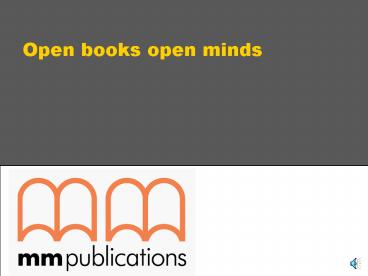Teaching children GS 3-6 - PowerPoint PPT Presentation
1 / 28
Title:
Teaching children GS 3-6
Description:
Open books open minds How do children learn languages? How do children learn languages? How do you think children learn their first language? a) by imitating adults b ... – PowerPoint PPT presentation
Number of Views:128
Avg rating:3.0/5.0
Title: Teaching children GS 3-6
1
Open books open minds
2
How do children learn languages?
3
How do children learn languages?
- How do you think children learn their first
language? - a) by imitating adults
- b) by experimenting and trying out hypotheses
about how the language - works
- c) both of the above
- 2. Do children with a high intelligence quotient
(IQ) score learn to speak foreign languages
quicker and better than others? - a) IQ is a crucial factor
- b) IQ is not a crucial factor
- c) setting and context are more important
- How important is high motivation in successful
language learning? - a) Not really important
- b) The most important factor
- c) An important factor but not the only one
- Is it better for pupils to learn a foreign
language when they are below the age of puberty? - a) definitely yes
- b) probably yes
4
(No Transcript)
5
What is different about teaching children?
6
Children have a lot of physical energy.
7
TPR activities
8
If you, stand up.
9
Children get bored easily.
10
Children have a wide range of emotional needs.
11
Children are still developing physically and
conceptually.
12
Children tend to be self-oriented and preoccupied
with their own world.
13
A class in Budapest
14
(No Transcript)
15
Feedback on video
- How did the teacher deal with any problems that
- arose?
- 2. Would you have dealt with any of the
problems - differently? If so, how exactly?
16
Problems
- Student doodling in his/her notebook after the
pairwork. - Student answering out of turn, until the teacher
tells him/her not to. - A student that says nothing unless the teacher
addresses him/her by name. - Student stands up and moves around after the
pairwork. - A student that starts crying when the teacher
asks him/her to work in pairs. He/she wants to
work with another student.
17
Children learn more slowly and forget things
quickly.
18
Children learn more slowly and forget things
quickly.
19
Children are excellent mimics.
20
Children seek meaning in language.
21
Different children learn best in different ways
22
What kind of language learner are you?
23
What kind of language learner are you?
24
What kind of language learner are you?
An average class of adults
29
understanding of children comes through the
hands, eyes, and ears, so physical world ?
dominant at all times Berman (1998)
34
37
25
Multiple intelligences
26
Learning
Im learning to say thank you. And Im learning
to say please. And Im learning to use
Kleenex, Not my sweater, when I sneeze. And Im
learning not to dribble. And Im learning not to
slurp. And Im learning (though it sometimes
really hurts me) Not to burp. And Im learning to
chew softer When I eat corn on the cob. And Im
learning that its much Much easier to be a
slob. .
Judith, Viorst. (1981) If I Were in Charge of the
World and Other Worries Poems for Children and
their Parents. Aladdin Books
27
Learning is fun
28
Thank you































